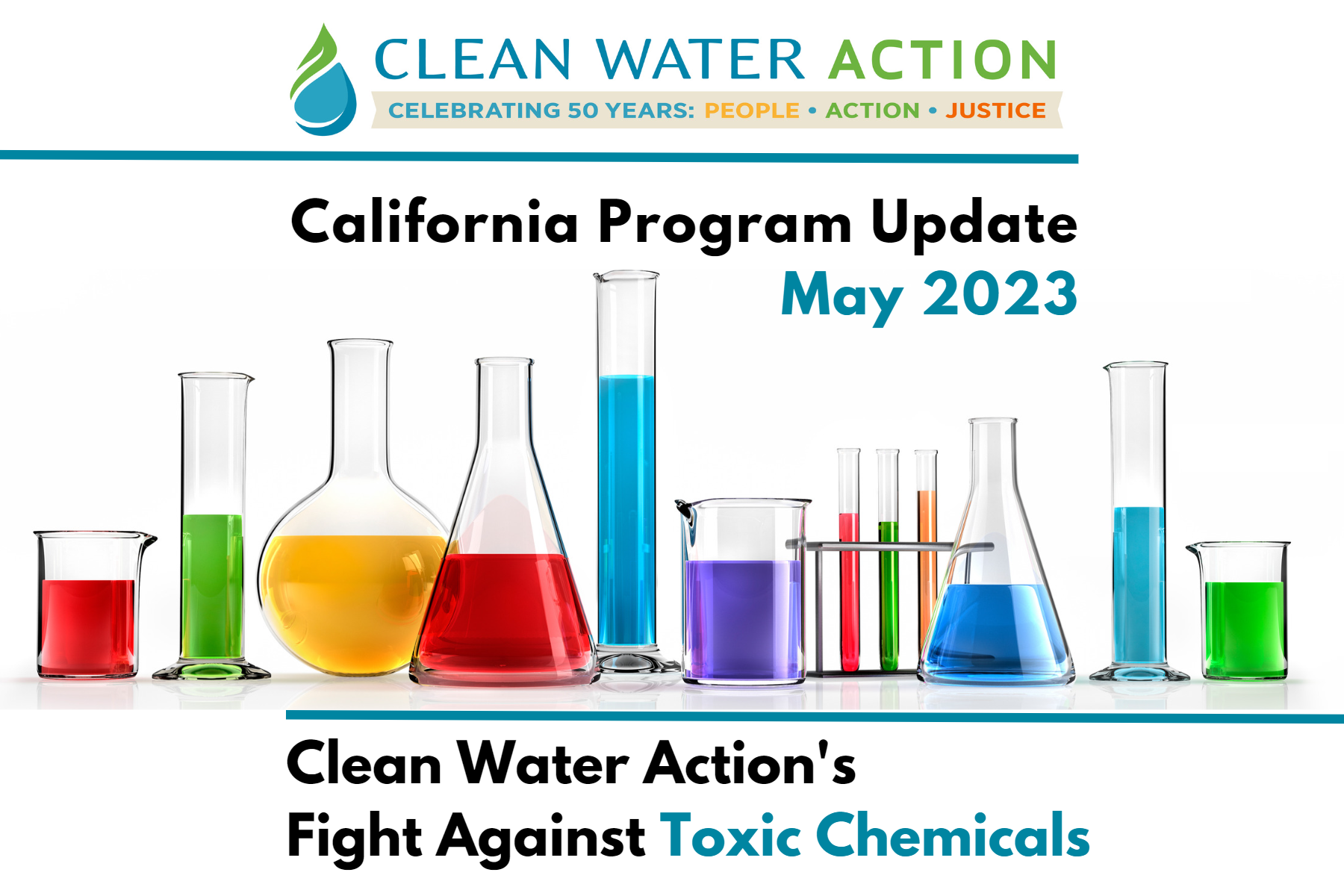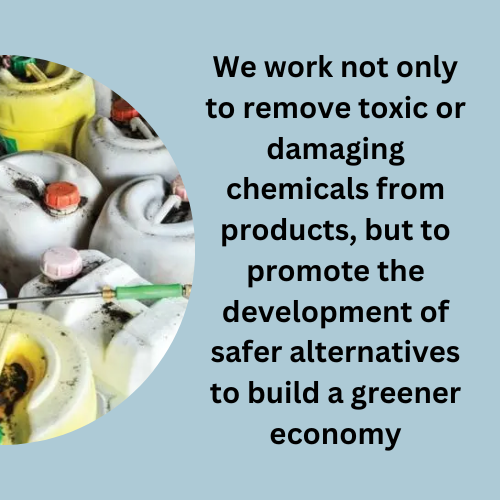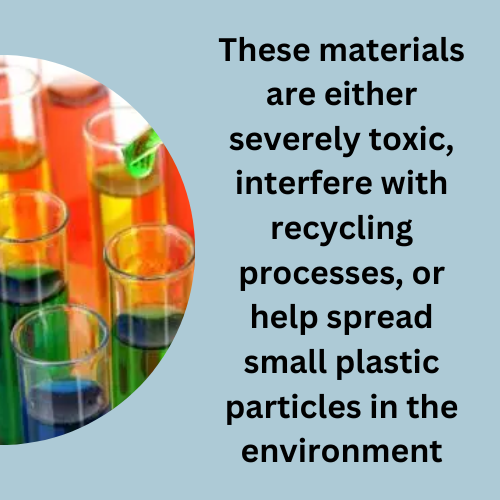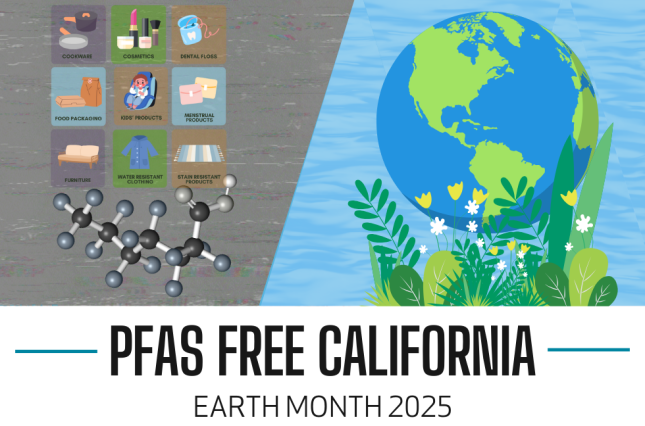
Welcome to Clean Water Action California’s first program update! Every month you’ll read all about how we’re working towards California’s environmental health and safety. Thank you for your support of this work and for being part of the solution!
Looking Both Ways: Our Upstream/Downstream Approach
Have you ever wondered why Clean Water Action cares about what’s in the clothes you wear or the packaging your food comes in or what you clean your house with? Sure, all of these things are part of the environment you live in, but what does that have to do with water? The answer is simple.
The materials we make and use end up in our water. They may go directly down the drain, enter the wastewater stream when you wash your clothes, or leach into groundwater when products end up in landfills. Or they may not even be in the products themselves, but instead are part of the production process.

As the old expression goes, an ounce of prevention is worth a pound of cure. In the end, we cannot treat our way out of our water problems due to limited technology, the sheer volume of pollution in modern society, and the huge costs of water treatment. We have to prevent pollution at the source, which is why we work not only to remove toxic or damaging chemicals from products, but to promote the development of safer alternatives to build a greener economy.
At the same time, there’s existing pollution that we cannot ignore. This is why our toxics program engages at the state and federal level. We work to ensure that we have strong, enforceable regulations on contaminants in our water that will drive treatment and ensure that cleanup of our polluted waterways is robust enough to be safe for both human life and wildlife. We call this our Upstream/Downstream approach, looking upstream at the sources of pollution and looking downstream at the damage already done.
Upstream: AB 1290 - Getting the Worst Plastics Out of CA Packaging

It’s no secret that one of California’s most pressing problems is plastic pollution. While the state has taken action to ultimately reduce the use of plastic, it has yet to address the most toxic forms that make certain packaging particularly problematic. AB 1290, authored by Assemblymember Luz Rivas and co-sponsored by Clean Water Action, Californians Against Waste, Breast Cancer Prevention Partners, and the Natural Resources Defense Council is the next step in addressing it.
AB 1290 will prohibit several of the most problematic forms of plastics or additives that contaminate recycling or pose a risk to human health by January 2026. They include:
- PFAS - chemicals that are both highly toxic and unable to break down.
- PVC - the chemical released during the recent train derailment in New Palestine, Ohio. Read about why avoiding another derailment matters.
- PVDC - known to cause extensive human and environmental harm.
- Colored pigments, which limit the end market for the plastic when recycled because of the color.
- Oxo-degradable and oxo-biodegradable additives that cause plastics to fragment and spread in our water, soil, and air.
- Non-detectable pigments that pass through recycling processes to landfills.\
- PETG - chemical that interferes with recycling processes and contaminates recyclable plastics.
AB 1290 will go to the Assembly Floor this month. Help us get this important bill through its first house and onto the state senate. Tell your Assemblymember to vote “aye” on AB 1290 here.
Downstream: Support U.S. EPA’s Action on PFAS in Drinking Water
California has been a leader in eradicating the toxic substance known as PFAS. Thanks to bills sponsored by Clean Water Action and our allies, as well as state regulation, we’ve achieved bans on these “forever” chemicals in firefighting foams, food packaging, textiles, some children’s products, carpets, and aftermarket waterproofing sprays for shoes and fabrics. Still, testing today has found one or more PFAS in the drinking water sources of 16 million Californians. As testing expands, that number is expected to rise much higher. That means we also need strong regulations to protect the public and ensure our drinking water is safe.
Clean Water Action welcomes the U.S. Environmental Protection Agency’s March 14th announcement of the first drinking water limits on some PFAS. They’re proposing limiting the oldest PFAS chemicals - PFOA and PFOS - to 4 parts per trillion, which is the lowest level that can be reliably measured in drinking water. They are also proposing an innovative “hazard index” approach to four other PFAS as a first step in regulating the class.
Not surprisingly, the EPA is facing intense opposition to this proposal as PFAS manufacturers seek to avoid liability for water treatment. The EPA needs to hear that you support strong drinking water limits and further action to get these chemicals out of our environment. Please send in a public comment before May 30 through our online action here.
Avoiding PFAS
Avoiding PFAS is hard. Not only are they considered “forever chemicals” because they don’t break down in the environment, they’re also “everywhere” chemicals - because of their oil and water resistant properties, we’ve found PFAS in cosmetics and personal care products like dental floss, cleaners, clothing and furniture, stain resistant carpet, human and animal medications, industrial lubricants, food packaging, and many other products. However, as we work to reduce their use, you can protect yourself by clicking here for 10 things you can do to reduce your exposure to PFAS chemicals.
There’s also an 11th step that can also make a huge difference - supporting Clean Water Action. We will continue our work to reduce the use of PFAS and other toxic chemicals, as well as address the environmental harm already done to our water, but we can’t succeed without you!
To learn more about PFAS and why they are a problem in California and around the world, visit our webpage at https://cleanwater.org/tackling-californias-pfas-problem.
Read and share our factsheet: PFAS: Coping with California's "Forever Chemicals" Crisis.
To support our work on toxics and our water please consider a donation by going to https://cleanwater.org/make-special-gift-protect-clean-water-california
Further Reading
Want to learn more about the issues in this newsletter? Here are a few articles and sites you might find interesting.
For those who love scientific analysis, here’s a paper exploring whether levels of PFAS in the environment (particularly in rainwater) have gone beyond the safe tipping point (the answer is yes): https://pubs.acs.org/doi/10.1021/acs.est.2c02765
To see what Clean Water Action is doing about PFAS across the country: https://cleanwater.org/campaign/preventing-pfas-pollution
To see what other states are also doing about PFAS: https://www.saferstates.org/our-partners/
The issue of microplastics getting into our bodies is really hitting a nerve. See this great NYT Opinion piece that was recently published: https://www.nytimes.com/2023/04/20/opinion/microplastics-health-environment.html
PVC and environmental justice: https://www.ehn.org/east-palestine-vinyl-chloride-2659926938.html
World impacts of plastic pollution https://www.unep.org/interactives/beat-plastic-pollution/




